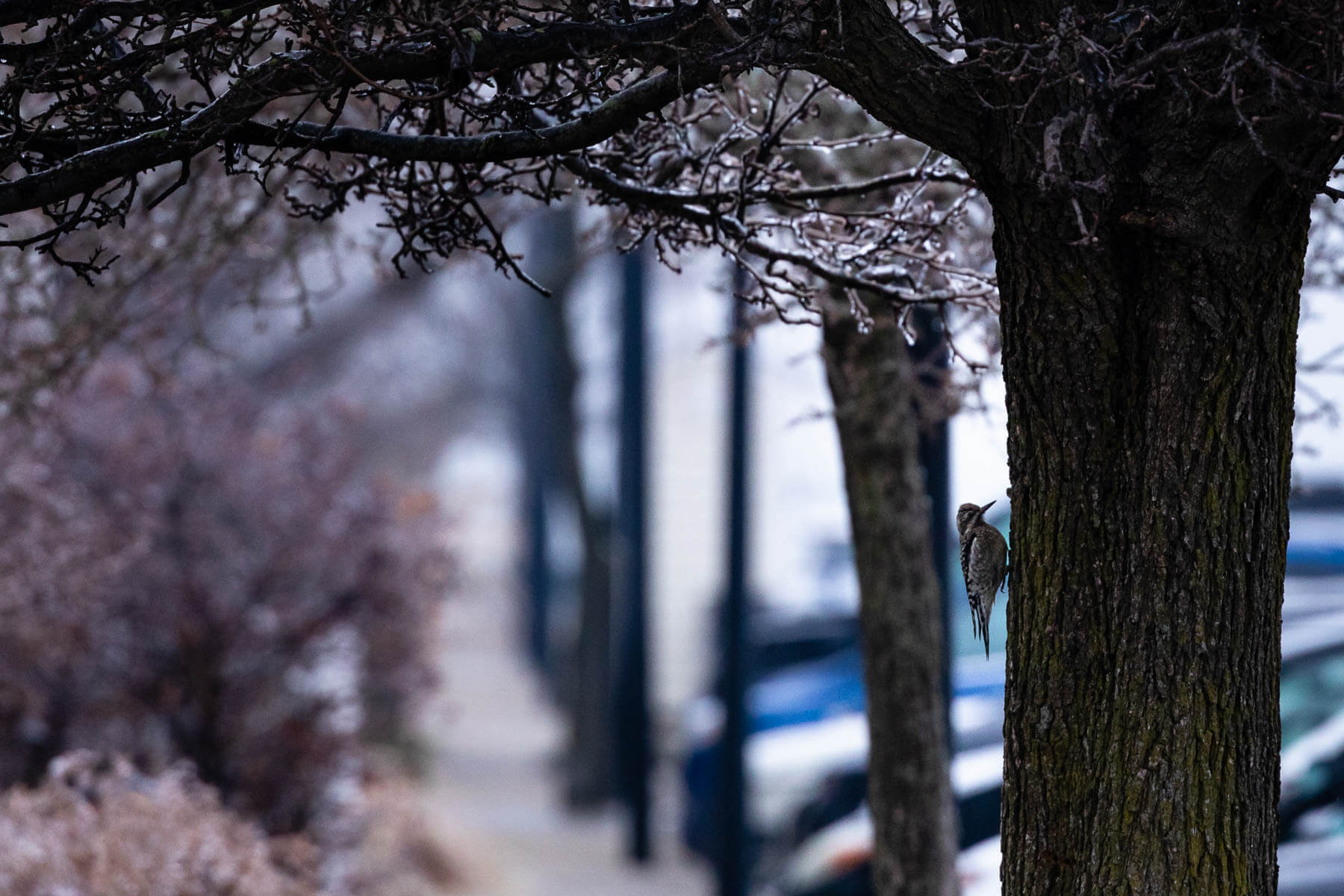Counting on green space

There are few opportunities to take part in critical wildlife research from the comfort of your living room, but the Great Backyard Bird Count is one of them.
Each year in February, the Cornell Lab of Ornithology commissions hundreds of thousands of people from across the globe to count birds and report their findings, helping scientists better understand global bird populations before one of their annual migrations. The event is an opportunity for people of all interest levels and expertise to bird watch from wherever it is they can see nature.
“I really empower the backyard aspect of the Great Backyard Bird Count,” said Tykee James, a birder and government affairs coordinator at the National Audubon Society. James participated in the count in his free time from his Mt. Pleasant neighborhood in Washington D.C., spotting birds from his balcony, which is high enough to put him at canopy level.
James, like many who participated from around the Chesapeake Bay watershed, found ways to take part despite the sheets of ice and snow leftover from recent winter weather. From his balcony view, James sighted nine European starlings, five Robins, five House sparrows and one Cardinal within 90 minutes. Though none of these birds would be considered a rarity, for James, the more common species are critical for introducing people to the sport.
“Most of my work and most of my passion in birding comes from working with, talking to and building experiences with first timers,” said James.
All of the sightings captured during the Great Backyard Bird Count can be viewed on eBird, and you can sort by species name, number of sightings and date viewed. Topping the count list in the Chesapeake watershed states were some familiar names: Common grackle, European starling, Snow goose, Redhead, Ruddy duck and Canvasback. Rare sightings tracked in the application include one Painted bunting found in New Castle, Delaware, one Red-breasted Nuthatch found in Otsego, New York and a Golden eagle found in Bedford, Pennsylvania.

While James was viewing birds from a neighborhood in D.C., Lisa Garrett, a long-time birder and current director of eco-tourism at the North Beach Department of Community Conservation, was at a pier in North Beach, Maryland looking for waterfowl.
Garrett’s been taking part in the Great Backyard Bird Count for years and used to lead bird watching events for nature centers. She considers birding to be a good way to encourage people and families to get out and experience nature in a way they haven’t done before, and has seen more participation since quarantine.
“Backyard birding has become a really big deal because we all had to stay at home [this past year].” she said. “And so a lot more people have been interested in it. Which is exciting to me.”
While the cold winter waves lapped onto the shore, Garrett spotted buffleheads, a goldeneye, a scoter and a yellow-bellied sapsucker on a pear tree near the boardwalk. Garrett is fortunate enough to live near North Beach and have a backyard that birds visit. She encourages people who live in apartments to head to local parks if they want to get into birding. “You're allowed to use [the park] as your own—they call it your patch,” she said.
Access to green spaces is vital for the health and wellbeing of the public, and the Chesapeake Bay Program has an outcome to increase the number of access points to the Bay and its tributaries. But ongoing work is needed to increase the availability of parks. For many living in the region, there isn’t a park that they can walk to if they wish to go birding or just enjoy the outdoors. This unequal access to green space has real consequences for quality of life, local economies and long-term conservation.
The Great Backyard Bird Count allows people to participate from their windows, patios or nearby green space—but having greater access to parks would benefit people and birds alike. Just like people, birds need places to rest and search for food, which requires plant and wildlife variety that can only come with a thriving outdoor space.
Those who were able to participate in the Great Backyard Bird Count contributed to a worthy environmental cause. The data collected will be used by the Cornell Lab of Ornithology and other partners to protect species in the Chesapeake Bay watershed and across the globe, so that humans can continue to enjoy watching, counting, listening to and being in the presence of beautiful birds.

Comments
There are no comments.
Thank you!
Your comment has been received. Before it can be published, the comment will be reviewed by our team to ensure it adheres with our rules of engagement.
Back to recent stories